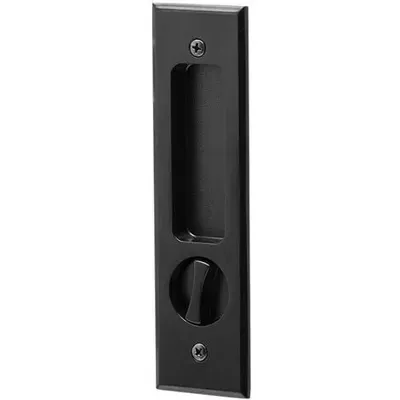Retractable door handles are a growing trend in the automotive industry, capturing attention for both their sleek design and safety implications. As electric vehicles (EVs) gain popularity, manufacturers are integrating features like electronic door handles and flush-mounted designs to enhance aesthetics and functionality. However, this innovation has raised significant concerns regarding vehicle safety, particularly as incidents involving malfunctioning handles have emerged following crashes. With regulatory bodies scrutinizing these designs, especially in light of Tesla door designs, many advocates are pushing for stricter automotive regulations to prevent accidents related to inaccessible door handles. Ultimately, while these retractable mechanisms may look cutting-edge, the pressing question remains: Are they truly safe for drivers and passengers alike?
In recent times, the automotive scene has increasingly embraced alternative door opening mechanisms that offer both stylish appeal and practical function. These automated and retractable entry systems, often referred to as electronic or flush-mounted door handles, present a modern take on vehicle access. However, despite their contemporary look, these designs have come under fire due to the potential safety risks they pose during emergencies. As discussions around vehicle safety heat up, especially concerning high-profile brands and their design choices, it’s essential to evaluate whether these advanced door handle systems enhance convenience or compromise the well-being of those inside the vehicle. The focus on their effectiveness highlights the necessity for car manufacturers to reconsider how form and function align in the face of evolving automotive regulations.
The Safety Risks of Retractable Door Handles
Retractable door handles present significant safety risks, particularly in emergency situations. Their design, while appealing for aesthetic reasons, compromises functionality by making them less accessible in crucial moments. For example, many vehicles equipped with these systems may trap passengers inside during a crash when the electronic mechanisms fail. In high-pressure scenarios, such as accidents, the absence of a straightforward way to open the door can exacerbate injuries and even lead to fatalities. Advocates for vehicle safety have voiced concerns that this design undermines the fundamental purpose of a door handle, which is to provide a reliable means of egress in emergencies.
Moreover, incidents involving retractable door handles have prompted regulatory scrutiny and prompted movements for legislative changes. Recent reports highlight a growing acknowledgment of the potential dangers associated with these designs. The consistent failure of retractable door handles in urgent situations has garnered the attention of safety regulators, who are increasingly focused on ensuring that such features do not compromise vehicle safety guidelines. As experts call for the incorporation of better mechanical backup systems, the overall push for enhanced transparency in emergency-access features has gained momentum.
Electronic Door Handles and Vehicle Safety
Electronic door handles, while innovative, raise crucial concerns related to vehicle safety. Their reliance on electricity means that in the event of a power failure due to a crash, the doors may become inoperable, leaving passengers trapped inside. For example, the National Highway Traffic Safety Administration (NHTSA) has chronicled over 140 defect complaints regarding electronic door handles, posing a serious issue for emergency responders attempting to rescue individuals in distress. Such incidents underline the necessity for regulations that mandate effective overrides or mechanical releases to ensure safe exits.
Regulators are now more focused than ever on balancing innovation with safety imperatives. Countries like China are actively working towards implementing standards that guarantee safety measures for electronic door mechanisms. Their proposed regulations aim not only to address the visibility of door latches but also to establish requirements for physical release mechanisms. As regulators begin to take action, the automotive industry must adapt and find ways to innovate without compromising the safety and security of its drivers and passengers.
Tesla’s Innovations: Efficiency vs. Safety Concerns
Frequently Asked Questions
What are retractable door handles and how do they work in vehicles?
Retractable door handles are sleek, flush-mounted designs that emerge when a vehicle senses the presence of a driver or passenger nearby. They often employ electronic mechanisms for operation, providing a modern aesthetic and potentially enhancing aerodynamics. However, this design raises concerns regarding usability, especially in emergency situations.
Why are retractable door handles considered a safety concern in electric vehicles?
Retractable door handles pose significant safety risks, as their electronic operation can fail during critical moments, such as after a crash. Instances where passengers became trapped due to inaccessible handles have led to increased scrutiny from regulators and safety advocates, particularly regarding their effectiveness for quick exits in emergencies.
How do electronic door handles differ from traditional mechanical handles in terms of safety?
Electronic door handles, such as retractable ones, often require electrical power to operate, unlike traditional mechanical handles that can be easily used regardless of the vehicle’s power state. This reliance on electronics can compromise access during power failures or crashes, creating safety hazards that have caught the attention of regulatory bodies.
What actions are regulators taking regarding retractable door handles in upcoming electric vehicle models?
Regulators, particularly in China, are moving to implement stricter guidelines for vehicle safety, which may include banning fully concealed retractable door handles. New regulations are poised to require that vehicles have easily accessible mechanical release mechanisms in addition to electronic door handles to ensure the safety of all occupants.
How has Tesla’s design of retractable door handles influenced public perception and regulatory action?
Tesla’s use of retractable door handles has come under scrutiny following several accidents where individuals were trapped inside vehicles due to handle failures. High-profile incidents have prompted consumers and safety advocates to raise concerns about the design’s accessibility, resulting in a potential push for regulatory changes to ensure these handles meet safety standards.
Are there alternatives to retractable door handles that maintain a sleek appearance while improving safety?
Yes, many automotive manufacturers are exploring semi-retractable designs or traditional door handles that offer a modern look while ensuring better accessibility. These alternatives may include visible physical release mechanisms to enhance safety without sacrificing style, striking a balance between aesthetics and practical usage.
What are some common complaints related to electronic door handles reported to the NHTSA?
The National Highway Traffic Safety Administration (NHTSA) has logged over 140 defect complaints regarding electronic door handles since 2018. These complaints often involve instances where children were trapped inside vehicles or where adults could not access the doors during emergencies, highlighting the critical need for reliable door handle designs.
How is the automotive industry responding to the concerns about flush-mounted and electronic door handles?
In response to safety concerns, many manufacturers are reassessing their designs for flush-mounted and retractable door handles. As regulations evolve, automakers are likely to incorporate more accessible mechanical backup systems, potentially transitioning away from fully electronic designs to enhance safety for all vehicle occupants.
What implications do proposed regulations on retractable door handles have for future vehicle designs?
Proposed regulations targeting retractable door handles may lead to a shift in vehicle design, pushing manufacturers to favor traditional or semi-retractable handles that include accessible mechanical releases. This could enhance safety and usability, addressing the issues identified by regulatory bodies and advocates.
| Key Point | Details |
|---|---|
| Safety Issues | Retractable door handles are under scrutiny due to injuries in accidents caused by their difficult accessibility. |
| Regulatory Attention | China may lead the way with new regulations targeting concealed or electronic door handle designs. |
| Design Hazards | Flush-mounted handles, while stylish, pose risks for drivers and first responders in emergencies. |
| High-Profile Incidents | Multiple accidents have highlighted the dangers of these door handle designs, leading to fatalities. |
| Consumer Complaints | The NHTSA has recorded over 140 defect complaints regarding these door handles since 2018. |
| Future Regulations | Proposed rules may classify traditional door handles as essential safety features to prevent failures. |
Summary
Retractable door handles are increasingly under scrutiny due to safety concerns following various accidents. While they may add a modern touch to vehicles, the risks associated with their design can be life-threatening, particularly during emergencies. Regulators, especially in China, are beginning to address these dangers, potentially leading to new safety standards that will require a more accessible mechanism for door operation. As both consumers and advocates demand changes, it’s clear that the conversation around retractable door handles is crucial for future vehicle safety.



























